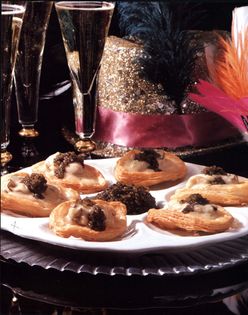Advertisement

Preparation info
- Makes:
12 pieces
(serves: 4 to 6 as a first course) - Difficulty
Easy
- Ready in
20 min
Appears in
Published 1992
I first ate oysters in beurre blanc at L’Archestrate, a former 3-star Parisian restaurant, and decided it was one of the most exciting and inspired flavor combinations I had ever tasted. When I returned to New York I worked for days to create a recipe with a presentation worthy of its flavor to teach in my hors d’oeuvre class. I discovered that the secret to plump flavorful oysters is not to cook them but merely to heat them essentially in their own liquor. I also discovered that the mos


